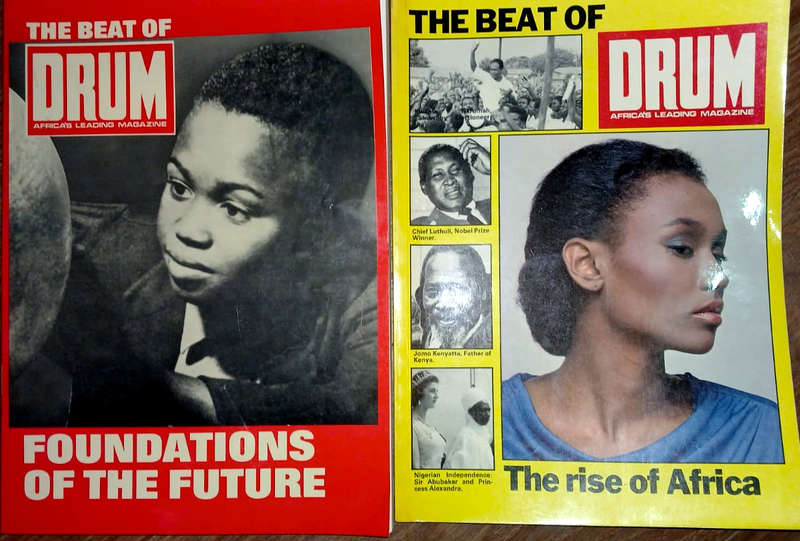
The Beat of Drum, volumes 1 & 2
Check my rate
| Main centres: | 1-3 business days |
| Regional areas: | 3-4 business days |
| Remote areas: | 3-5 business days |

| Main centres: | 1-3 business days |
| Regional areas: | 3-4 business days |
| Remote areas: | 3-5 business days |
The Story of a Magazine that Documented The Rise of Africa as told by Drum's publisher, editors, contributors and photographers.
The Beat of Drum, volumes 1 & 2, Raven Press, 1983, softcovers illustrated, 172 pages & 160 pages, 21.5 cms x 29.8 cms, condition: very good.
DRUM magazine described the world of the urban Black; the culture, the colour, dreams, ambitions, hopes and struggles. Lewis Nkosi described DRUM's young writers as "the new African[s] cut adrift from the tribal reserve urbanised, eager, fast-talking and brash."
Drum's heyday in the 1950s fell between the Defiance Campaign and the tragedy at Sharpeville. This was the decade of potential Black emergence, the decade when the Freedom Charter was written and the decade when the ANC alliance launched the Defiance Campaign. The aim was to promote an equal society. The Nationalist government responded with apartheid crackdowns and treason trials.
It was also the decade of the movement to the cities, of Sophiatown, of Black Jazz, the jazz opera King Kong with a Black cast, an adoption of American culture, of shebeens (illegal drinking dens) and flamboyant American style gangsters (tsotsis) with chrome-laden American cars who spoke a slang called Tsotsitaal.
It was a time of optimism and hope. DRUM was a "record of naivety, optimism, frustration, defiance, courage, dancing, drink, jazz, gangsters, exile and death"
Peter Magubane described the atmosphere in the newsroom. "DRUM was a different home; it did not have apartheid. There was no discrimination in the offices of DRUM magazine. It was only when you left DRUM and entered the world outside of the main door that you knew you were in apartheid land. But while you were inside DRUM magazine, everyone there was a family."
DRUMs cast of black journalists included Henry ("Mr DRUM") Nxumalo, Can Themba, Todd Matshikiza, Nat Nakasa, Lewis Nkosi and others such as William "Bloke" Modisane, Arthur Maimane, Stan Motjuwadi and Casey Motsisi. Together, they were known as "the DRUM Boys". This group lived by the dictum "live fast, die young and have a good-looking corpse". Most of these journalists went on to publish works in their own right. The other journalists who worked there include Bessie Head. Lionel Ngakane, Richard Rive and Jenny Joseph.